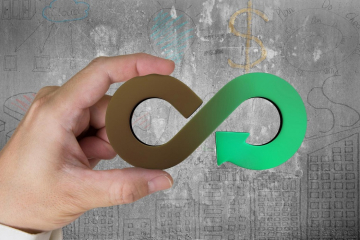The novel coronavirus (COVID-19) has revealed just how vulnerable current supply chains are to global disruptions. Many companies have had to endure production delays, and have been forced to rethink ways of producing goods due to failures in their global supply chains as a direct result of the pandemic. In fact, according to the Institute for Supply Management (ISM), approximately 75 percent of companies have reported supply chain disruptions because of transportation restrictions brought on by COVID-19.
Reimagining How Supply Chains are Organized
While the scale and speed of the disruption is unprecedented, it is not without a modern analogue; in recent years, companies have been working to adapt to the impact of climate change through reimagining how their supply chains could be organized to reduce risk. It’s well established that even small increases in global warming can drive substantial upticks in the likelihood of extreme weather events. And although these weather events are regional in nature, they can wreak havoc on modern supply chains given the interdependency of global trade. One approach companies have taken to reduce the risk from climate impacts has been to adapt their supply chains to be more circular, which makes them better able to respond to these climate impacts than a traditional linear supply chain model.
A Circular Supply Chain
At its core, a circular supply chain model means that materials used in the production of goods are not disposed of, but rather fed back into the supply chain in an endless loop to help reduce or even eliminate a company’s dependency on new material inputs to produce its goods. According to the Ellen MacArthur Foundation, our current global economy’s supply chain network essentially boils down to “a massive conveyor belt of material and energy from resource-rich countries to the manufacturing powerhouse China, and then on to destination markets in Europe and America where materials are deposited or—to a limited degree—recycled.” In stark contrast to this traditional linear model, in a circular model these products are collected at the end of their useful life by regional supply chains, broken down, and the materials are returned to the manufacturing facilities to be used again. These circular supply chains keep these necessary material inputs close to home and supplement global supply chain arrangements, so that when global disruptions occur companies have an alternative material supply on which to draw to produce their products.
Transitioning to Circularity
Coming out of the pandemic, companies should map out their supply chain networks and look to design new circular models for those elements of their supply chains that are the most at-risk for disruption. As transitioning to circularity is an involved process, we have three recommendations on where to start:
- Map out your product-specific supply chains. List your top products by revenue, identify their key components, then attempt to map the supply chain as far down as you can for those key components. Given the multi-layered nature of supply chain networks, there may be lower-tier suppliers that are key to the manufacturing of your products that you’re currently unaware of. This mapping process should extend all the way to your raw material suppliers to gain full visibility of potential risks. To gain additional insight, try to involve your major, first-tier suppliers in the mapping process as they may have greater visibility down the chain.
- Try to assemble as much primary environmental data as possible on your top products versus using benchmarks or proxy values from Lifecycle Assessment (LCA) databases. What is the energy and water intensity of facilities you own that manufacture and/or package the product being evaluated? Can you get this same data from relevant supplier facilities? Are suppliers using virgin or recycled materials? What modes of transport are used and approximate miles? Capturing this primary data on your products will help inform potential circular strategies.
- Merge the product-specific environmental and supply chain data to identify your products’ foot “size” in terms of location-specific context and sensitivities, and their foot “print” in terms of environmental impact. For instance, if water was identified to have an outsized influence on product manufacturing, a large, inefficient supplier facility in a water-stressed location could be a prioritized focus. Alternatively, a supplier generating waste of critical raw material in a location where there is limited recycling infrastructure or reuse mechanisms could also present a unique circularity opportunity.
Deploying the above recommendations can surface product-relevant insights that can help your company build supply chain resiliency, identify collaboration opportunities, and position your business for a future world where circularity is commonplace.
We are ready to help you define new strategies, articulate the business value, and start taking practical steps towards enabling your transition to circularity.
Read More About Circular Economy ConsultingWant more news and insights like this?
Sign up for our monthly e-newsletter, The New Leaf. Our goal is to keep you updated, educated and even a bit entertained as it relates to all things EHS and sustainability.
Get e-NewsletterHave any questions?
Contact us to discuss your environment, health, safety, and sustainability needs today.






